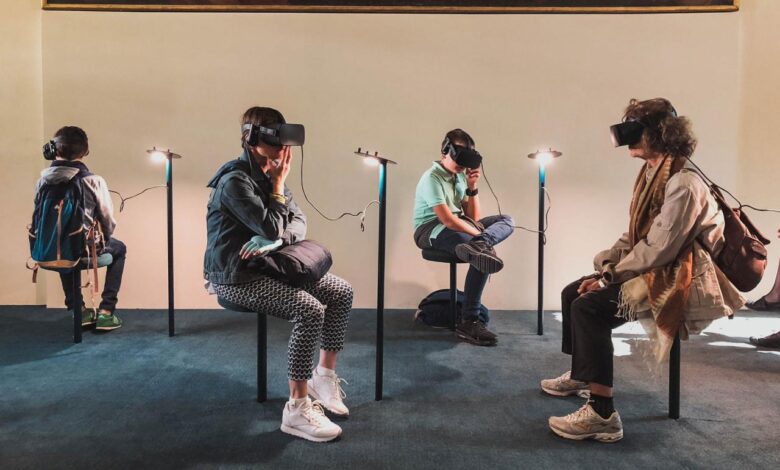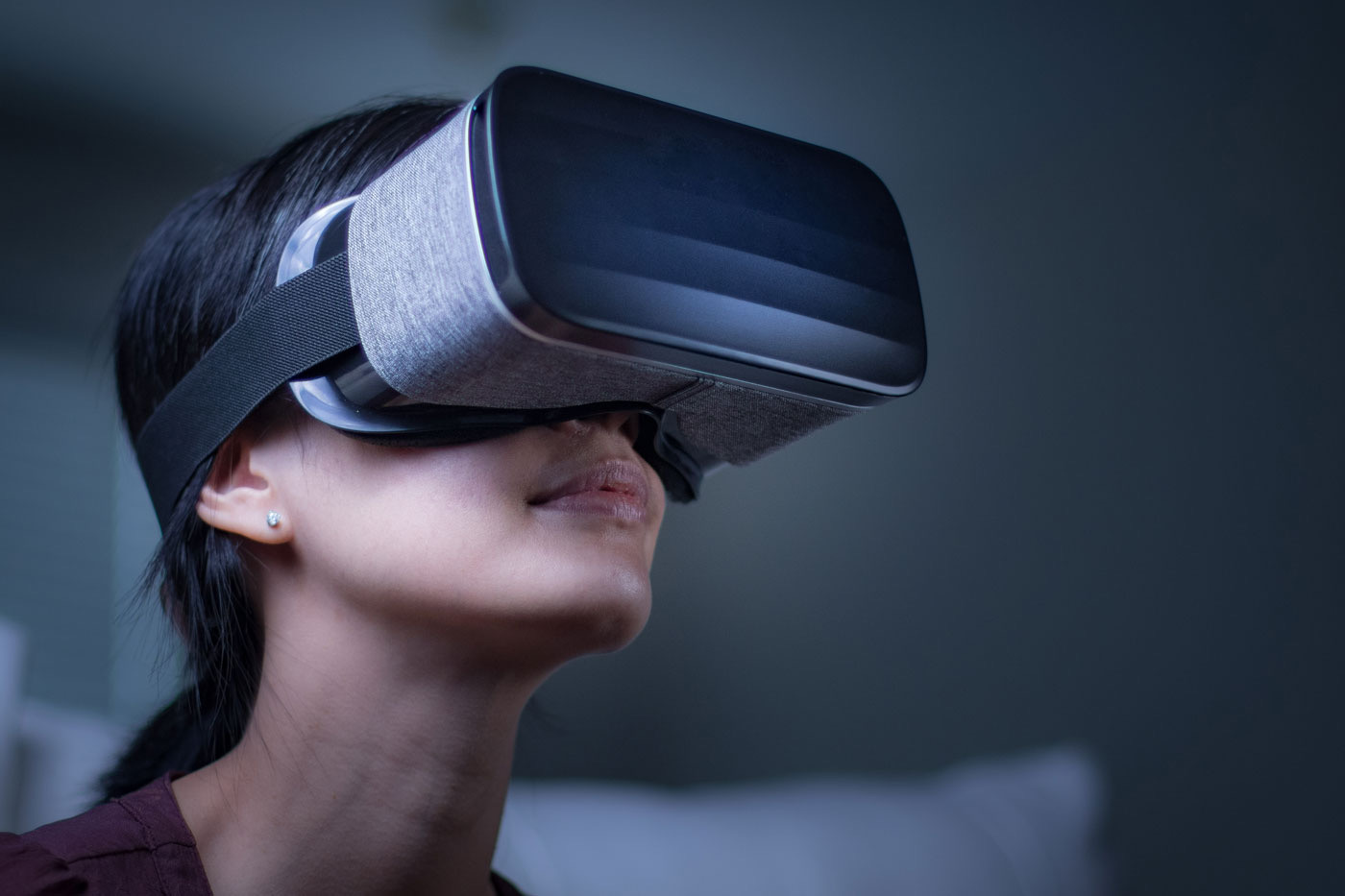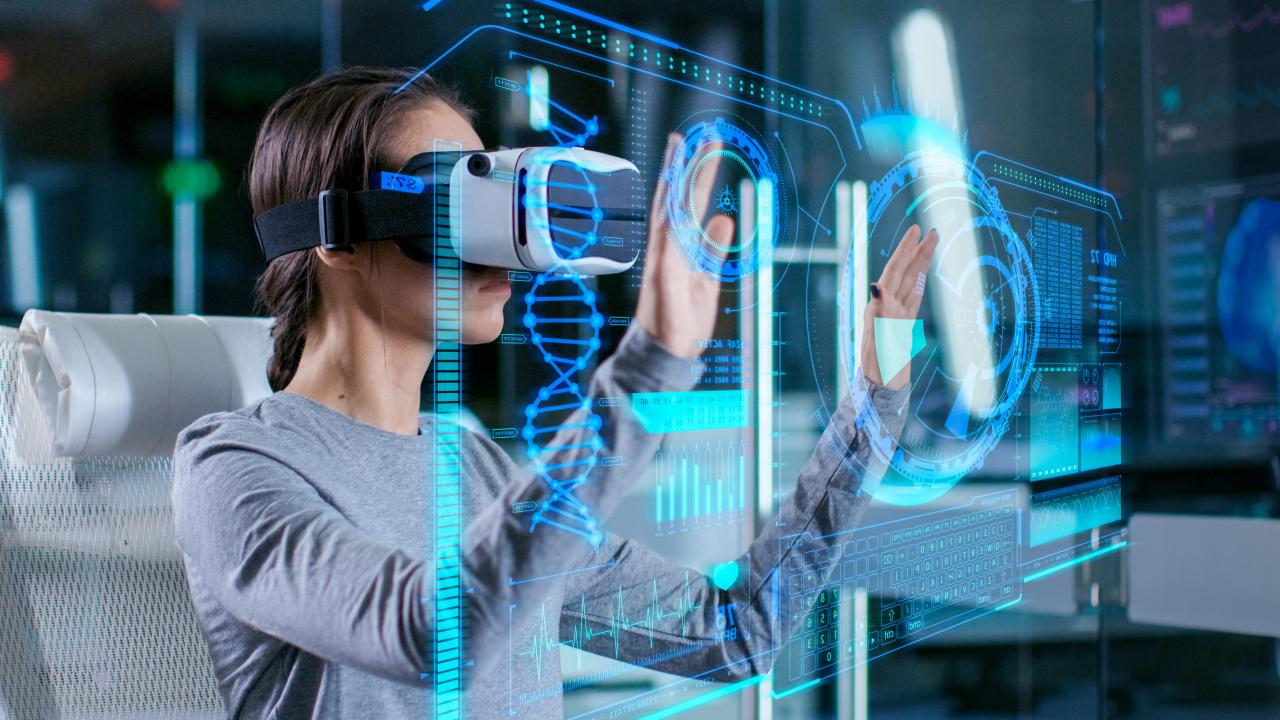Immersive Tech Experiences Unlock Potential in Digital Era

The world of technology is in a state of perpetual acceleration, and at the forefront of this revolution are immersive tech experiences. The days of a simple, two-dimensional screen are a relic of the past, replaced by a sophisticated, interactive, and spatial paradigm that is fundamentally changing our relationship with the digital world. In 2025, immersive technology is not just for tech enthusiasts; it is a foundational part of our daily lives, transforming everything from how we work and shop to how we communicate and build communities. This is a profound shift from a passive, observational relationship with technology to an active, participatory one, where we are not just a consumer of content but an inhabitant of it. This definitive guide will take you on a deep dive into the foundational concepts of immersive tech, explore the core categories of transformative experiences, and provide the blueprint for anyone looking to unlock the full potential of this new digital era.
The Foundational Philosophy of Immersive Tech

Before we can address specific experiences, it’s crucial to understand the principles that guide the design and function of modern immersive tech. This is about a mindset that values presence, seamlessness, and long-term investment over fleeting trends.
A. The Shift from Passive Viewing to Active Participation
The biggest mistake a new immersive tech consumer can make is to view it as a new form of television. The modern approach is to view it as a complete ecosystem of interconnected devices that work together to drive a single, unified outcome. A VR headset is not just for gaming; it is a tool for a person’s work, a person’s communication, a person’s entertainment, and a person’s health. The most transformative immersive tech for 2025 is that which seamlessly integrates into our daily lives, a companion that is so subtle and so intuitive that it feels like a natural part of our existence.
B. The Power of “Presence” and Sensory Immersion
The core value proposition of a modern immersive experience is its ability to provide a new level of presence. Presence is the feeling of “being there,” a sense of being in a new, virtual world where your actions, your movements, and your senses are all a part of the experience. This is powered by a new generation of hardware, such as a high-resolution headset and a set of motion controllers, which can provide a new level of sensory immersion and a new level of a person’s unique vision and style. This pursuit of presence is a powerful antidote to the demands of modern life, offering a chance to de-stress, to recharge, and to focus on the things that truly matter.
C. The New Paradigm of Spatial Computing
The future of computing is not a two-dimensional screen; it is a three-dimensional, immersive, and interactive experience. Spatial computing, a new paradigm of computing that uses the physical world as a canvas for digital information, is now a foundational part of a computer’s design. This is a shift from a mindset of a single screen to one of a holistic, interconnected ecosystem where every device is a part of a larger, more powerful system. The most transformative immersive tech for 2025 is that which seamlessly integrates into our daily lives, a companion that is so subtle and so intuitive that it feels like a natural part of our existence.
D. The Role of Immersive Tech in a Connected Future
The lines between the digital and physical worlds are dissolving. An immersive experience is a powerful gateway to a new era of “phygital” experiences, seamlessly blending the convenience of online services with the sensory experience and human connection of the physical world. This could be a VR headset that provides a new level of on-location information and navigation, or a pair of smart glasses that can overlay digital information onto the physical world. A wearable is a tool that is designed to blend the digital and physical worlds, creating a new and more interactive reality.
The Most Transformative Virtual Reality (VR) Experiences
The most exciting and transformative VR experiences are those that are pushing the boundaries of what is possible, creating a new sense of presence, and a new way to interact with the world.
A. VR for Gaming and Entertainment
Gaming and entertainment have long been the most popular use cases for VR, and in 2025, they are more immersive and more engaging than ever.
- A. Immersive Gaming: VR gaming is no longer just about a new perspective; it is about a new level of presence and immersion. A player can now “step inside” a game, where they can interact with objects and other players in a way that feels real. The future of gaming is a fully immersive, virtual world where a player can explore, create, and socialize in a way that is not possible with a traditional game.
- B. Virtual Concerts and Events: The future of entertainment is not just about a physical venue; it is about a virtual one. A person can now attend a virtual concert, a virtual movie premiere, or a virtual fashion show from the comfort of their own home. This provides a new level of accessibility and a new form of entertainment that is not limited by physical space or location.
- C. Interactive Movies and Storytelling: The future of storytelling is not passive; it is interactive. A person can now “step inside” a movie, where they can interact with characters and influence the narrative in a way that feels real. This is a new form of entertainment that is a reflection of a person’s unique vision and style.
B. VR for Social Connection and Collaboration
The future of social media is not just a 2D screen; it is a 3D, immersive, and interactive experience. VR is a powerful tool for building communities, connecting with others, and collaborating on projects in a new and innovative way.
- A. VR Chat Platforms: VR chat platforms, such as VRChat and Rec Room, are a new form of social media. They are a virtual world where a person can connect with others from all over the world, where they can build a community, and where they can create new and exciting experiences.
- B. Virtual Offices and Collaborative Design: The future of work is a hybrid one, where human creativity and empathy are augmented by the speed and processing power of AI. VR is a powerful tool for collaboration, with a new generation of virtual offices and collaborative design platforms that allow a team to connect and to work together from anywhere in the world.
- C. Virtual Reality Therapy: VR is a powerful tool for mental health and wellness. It can be used to treat phobias, to reduce anxiety, and to provide a new form of therapy. The experience is about a sense of peace, a deeper connection to yourself, and a feeling of being in a place that is truly special.
C. VR for Fitness and Wellness
The future of fitness is not a traditional gym; it is a virtual one. VR is a powerful tool for making exercise more engaging, more fun, and more accessible than ever before.
- A. VR Fitness Games: VR fitness games, such as Supernatural and Beat Saber, are a new form of exercise. They are a fun, engaging, and immersive way to get some exercise, and they provide a new level of motivation and a new way to track your progress.
- B. Meditation Apps: VR meditation apps, such as Guided Meditation VR, are a new form of meditation. They are a powerful tool for reducing stress, for reducing anxiety, and for promoting inner peace. The experience is about a sense of peace, a deeper connection to yourself, and a feeling of being in a place that is truly special.
D. VR for Education and Training
The future of education is not a traditional classroom; it is a virtual one. VR is a powerful tool for making learning more engaging, more immersive, and more accessible than ever before.
- A. Virtual Field Trips: A virtual field trip is a great way to learn about a new destination or a new culture. A student can use a VR headset to “walk” through an ancient city, to “explore” a museum, or to “hike” a national park. This is a powerful tool for a student who wants to learn about a new destination or a new culture.
- B. Surgical Training: VR is a powerful tool for medical education and training. It can be used to simulate a surgical procedure, to practice a new technique, and to provide a new level of collaboration between a surgeon and their team.
The Most Practical Augmented Reality (AR) Experiences

While VR is about a new virtual world, AR is about a new, more interactive reality. The most practical AR experiences are those that are enhancing our daily lives in a way that feels seamless and intuitive.
A. AR for E-commerce and Retail
The future of shopping is a blend of the digital and physical worlds. AR is a powerful tool for enhancing the shopping experience by allowing a customer to interact with a product in a new way.
- A. Virtual Try-On: AR can now allow a customer to virtually try on clothing, makeup, and accessories. This reduces return rates and provides a level of confidence and a sense of authenticity that is not available with a traditional e-commerce store.
- B. AR Showrooms: An AR showroom is a great way to showcase a product in a new way. A customer can use their smartphone to “place” a piece of furniture in their living room, to see how a new car looks in their driveway, or to get a sense of a product’s size and scale.
- C. Product Visualization: An immersive product demo is a great way to showcase a product in a new way. A customer can use a VR headset to “experience” a product in a virtual world, which can be a great way to build a brand and a loyal customer base.
B. AR for Navigation and Information
AR is a powerful tool for navigation and information. It can overlay digital information onto the physical world, providing a new level of on-location information and a new way to navigate a new city.
- A. AR Maps: An AR map is a great way to navigate a new city. A traveler can use their smartphone to point their camera at a street and get real-time directions, a list of local restaurants, and a list of local attractions.
- B. Visual Search: AR visual search is a great way to get real-time information on a new product or a new place. A customer can use their smartphone to point their camera at a product and get real-time information about its origin, its ethical practices, and its social impact.
- C. Real-Time Translations: AR real-time translations are a new form of translation. A person can use their smartphone to point their camera at a sign in a foreign language and get a real-time translation. This is a powerful tool for a traveler who wants to communicate with locals and to get a deeper sense of a destination’s local culture.
C. AR for Art and Entertainment
AR is a powerful tool for art and entertainment. It can overlay digital information onto the physical world, creating new forms of creative expression and a new way to interact with a physical space.
- A. AR Art Installations: An AR art installation is a great way to showcase a piece of art in a new way. A person can use their smartphone to point their camera at a piece of art and get a real-time animation, a video, or a soundscape.
- B. Interactive Filters: AR filters are a new form of entertainment that is empowering individuals and businesses to create new forms of content. These filters can be used to add a digital layer to a physical image, a video, or a piece of art.
- C. AR-Enhanced Events: An AR-enhanced event is a great way to showcase a product in a new way. A business can use AR to create a virtual storefront or a virtual event that allows a customer to interact with a product in a new way.
The Convergence of Reality
The future of immersive technology is not VR or AR; it is a seamless blend of both, a new form of reality known as Mixed Reality (MR). MR is a technology that allows a person to interact with a digital object in a physical world, creating a new level of presence, a new level of immersion, and a new level of a person’s unique vision and style. The most common application of MR is in a new generation of gaming, training, and virtual social platforms. It is a technology that is designed to blend the digital and physical worlds, creating a new and more interactive reality.
A Strategic Framework for Engaging with Immersive Tech
Understanding these technologies is just the first step. The real challenge lies in integrating them into your personal and professional lives.
A. For the Consumer
- A. Start with your smartphone: The best way to get started with AR is with your smartphone. Download an AR app, and start experimenting with the technology.
- B. Invest in an affordable headset: The best way to get started with VR is with an affordable headset. You can now buy a high-quality VR headset for a fraction of the cost of a few years ago.
- C. Explore the ecosystem: The VR and AR ecosystems are vast and diverse. Explore the different categories of experiences, from gaming and entertainment to education and wellness.
B. For the Creator
- A. Identify a micro-niche: Within a hot sector, the real opportunity lies in a micro-niche. For example, within the broad sector of “AR retail,” a micro-niche could be “AR virtual try-on for luxury handbags.”
- B. Learn the necessary skills: The VR and AR landscapes are constantly evolving, and the only way to stay ahead is to be a continuous learner. Learn the necessary skills, such as 3D modeling, coding, and game design.
- C. Build a community: The most successful VR and AR ventures are those that are built on a foundation of community. Build a community of like-minded individuals, and use it to gather feedback, to iterate on your product, and to build a brand that is a reflection of a community’s shared values and passions.
Conclusion
The new era of technology is defined by a fundamental transformation, driven by the convergence of technology, decentralization, and a new set of user values. The immersive tech experiences discussed in this guide are not isolated events but are deeply interconnected, each one influencing and amplifying the others. The rise of VR, for example, is not just about gaming; it’s about enabling a new era of social connection, a new way to work, and a new form of entertainment. Similarly, the push for AR is not just about a new way to shop; it’s about a new way to interact with the world, a new way to learn, and a new way to solve problems.
For any business leader, the challenge is clear: you must be proactive, not reactive. The era of waiting to see what the competition does is over. The companies that will thrive are those that are already building a privacy-first brand, investing in VR and AR technologies, and embracing a phygital approach to customer experience. The future is not a destination; it’s a continuous process of learning, adapting, and innovating.
This new landscape presents a monumental opportunity. While the scale of change may seem daunting, it also opens up countless new avenues for entrepreneurship and growth. Businesses that lead with purpose, transparency, and a genuine commitment to their customers and employees will not only survive but will build a foundation for sustained success. The future of business is not about simply chasing profits; it is about creating value, building trust, and navigating a complex world with agility and foresight. It is a thrilling and challenging journey, and for those who are ready, the rewards are immense.
